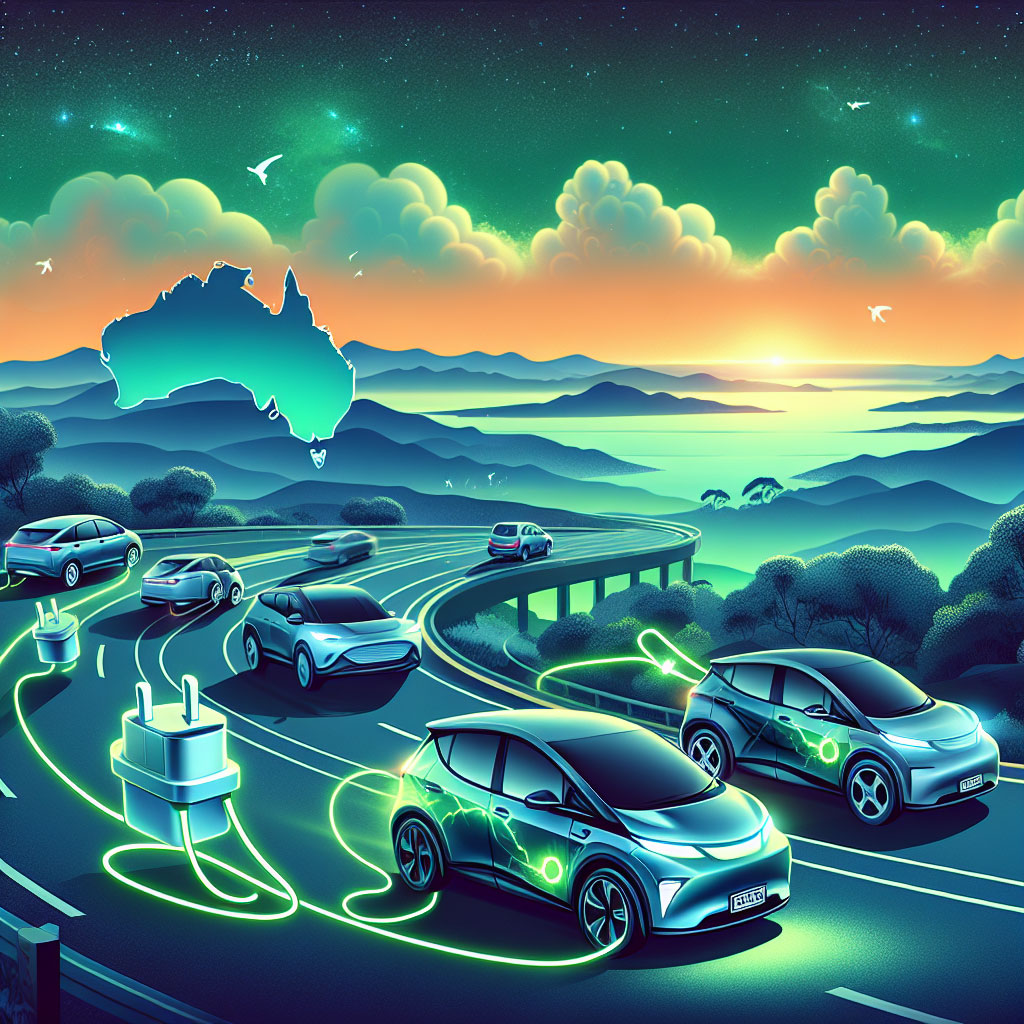
Australia’s energy and transport landscape is at a turning point. A forward-looking report from the Australian Academy of Technological Sciences and Engineering (ATSE) argues that the nation can slash diesel dependence across transport, mining, and agriculture and accelerate the shift to electric vehicles (EVs) through targeted policy reform. With the right mix of incentives, infrastructure investment, and regulatory support, widespread EV adoption could be within reach for many Australians in just a few years.
Why Diesel Is in the Crosshairs
Diesel remains a major source of emissions and is entrenched in several key Australian industries. The ATSE report highlights that the true cost of diesel is being masked by subsidies, creating a disconnect between market signals and emissions outcomes.
- Fuel tax credits cost taxpayers around $10.2 billion annually, effectively keeping diesel prices artificially low.
- This subsidy regime undermines emissions reduction targets and slows the transition to cleaner technologies.
The report recommends reform or gradual phasing out of subsidies to diminish diesel’s competitive advantage, thereby making EVs and other clean technologies more financially attractive for businesses and households.
The Missing Piece: Charging Confidence
A persistent barrier to EV uptake is confidence in charging availability. ATSE Fellow Professor Ken Baldwin points to European cities as a model where charging is ubiquitous and predictable.
“In the UK, Scandinavia, and much of Europe, people don’t have range anxiety,” Baldwin observes. “That’s the difference-confidence that you can charge anywhere.”
In Australia, charging networks are still uneven, particularly outside major metropolitan corridors. However, momentum is building as private investment and government programs expand both urban and regional charging options. The expansion is critical because reliable access to charging reduces perceived barriers and accelerates EV adoption.
Cost, Capability, and Perception
Price and capability are central considerations for many buyers. While new EVs remain more expensive upfront than equivalent internal combustion engine vehicles, total cost of ownership over the life of the vehicle is increasingly competitive as battery costs fall, maintenance needs shrink, and fuel savings accumulate.
- The current lower end for new EVs tends to hover around the $30,000 mark, though many models near this price point are small or city-oriented.
- Towing capability and long-distance driving remain questions for some buyers. Yet, Baldwin notes that typical daily driving patterns in Australia are compatible with a broad range of existing EVs.
What Australians Actually Do
- About 95 per cent of trips are short-distance, well within the typical range of many EVs on the market.
- A relatively small share of drivers regularly undertakes interstate travel, suggesting that many households could meet most of their daily transport needs with existing EV options.
- For routine driving, EVs already meet a large portion of Australians’ daily requirements.
Signs of Momentum
EV adoption is accelerating, supported by improving model availability, expanding charging networks, and policy signals. Recent data from the Australian Automobile Association (AAA) show that in the second quarter of 2025, about 41,000 EVs were sold in Australia, accounting for roughly 13 per cent of new-car sales. This represents a record market share and signals growing consumer confidence in EVs.
Beyond sales, Australia is beginning to realize a more circular approach to vehicle materials. As older petrol and diesel vehicles are retired, their components-steel, aluminium, batteries, and other materials-can be recycled and repurposed into the next generation of vehicles, reducing overall environmental impact.
What Needs to Happen Next
Industry experts stress that a combination of policy incentives, a credible carbon pricing framework, and a robust charging network are essential to accelerate the transition. Here’s what the trajectory could look like:
- Policy and pricing: Implement predictable, long-term incentives for EV buyers and fleet operators while phasing out subsidies that distort the market. A carbon pricing signal aligned with industry decarbonisation goals would further tilt the economics in favour of EVs.
- Infrastructure: Accelerate nationwide charging infrastructure roll-out, including fast-charging corridors along major highways and widespread availability in regional towns to deliver charging confidence where Australians live, work, and travel.
- Grid readiness: Invest in grid upgrades and demand-management strategies to accommodate rising EV charging loads without compromising reliability or affordability.
- Industry and workforce: Support local manufacturing, battery recycling, and skills development to strengthen the domestic EV ecosystem and keep more value-adding activity in Australia.
- Public acceptance: Launch consumer education campaigns that demystify charging, range, and maintenance costs, and that highlight real-world ownership experiences.
Conclusion
Australia stands at a critical juncture in its transition to sustainable transport. The ATSE’s findings underscore that policy reform, financing innovation, and a reliable charging network are the keystones of a successful shift away from diesel. While challenges remain-particularly around charging infrastructure and public perception-ongoing investments by government, industry, and international partners are creating a pathway for more Australians to drive electric in the near term. The era of EVs on Australian roads is advancing, with every policy decision and charging point contributing to a cleaner, more resilient transport future.
FAQs
1) Is diesel still the dominant fuel for transport in Australia?
- While diesel remains widely used in heavy transport, mining, and agriculture, the ATSE report argues that its dominance is increasingly unsustainable due to environmental costs and subsidies that keep it artificially cheap. Reforming these subsidies is part of the strategy to accelerate the EV transition.
2) How expensive are EVs in Australia compared with traditional cars?
- The upfront price of new EVs can be higher, with entry models around $30,000 or more. However, lower running costs, reduced maintenance, and fuel savings can make total ownership cost competitive or cheaper over the vehicle’s life. Availability and price will improve as the market scales and more models enter the market.
3) What is the current state of charging infrastructure in Australia?
- Australia is expanding its public charging network, with a focus on high-traffic corridors and regional towns. Although charging access has improved, many potential buyers still want more certainty about charging availability along their typical routes and daily patterns.
4) How fast are EVs selling in Australia?
- In Q2 2025, about 41,000 EVs were sold, representing roughly 13 per cent of the new-car market. This marks a record share and indicates strong momentum behind EV adoption.
5) What policy measures could accelerate EV adoption?
- A stable mix of incentives for buyers and fleets, pro-innovation carbon pricing, and substantial investments in charging infrastructure and grid readiness are among the measures most likely to accelerate EV uptake. State and federal coordination will be crucial to ensure a seamless nationwide transition.
6) Will EVs be able to meet my towing or long-distance travel needs?
- Many EVs on the market today offer towing capabilities and long-range options suitable for typical Australian travel. For heavier towing or extended trips, model choice and charging stop planning are important considerations, but the landscape is rapidly expanding with higher-range models and faster charging networks.
7) What about recycling and the circular economy for EVs?
- As older vehicles retire, components such as batteries and metals can be recycled and repurposed, supporting a circular economy and reducing the environmental footprint of the vehicle lifecycle.
8) How can Australian consumers stay informed about EV developments?
- Follow trusted sources such as government policy updates, industry associations (like FCAI and ATSE), and independent market trackers. Local dealer networks and climate-focused media outlets also provide practical guidance on model availability, incentives, and charging infrastructure in your area.
About EV Evolution
EV Evolution is the leading online platform dedicated to Australian electric vehicle owners and enthusiasts. We foster a vibrant community, delivering essential EV news and insights, and enhancing user engagement through our innovative, AI-powered chatbot for dynamic discussions. Our mission is to empower Australian electric vehicle owners and enthusiasts by fostering a vibrant, AI-driven online community that connects, informs, and advances the nation’s electric vehicle landscape.
: Australia Eyes EV-Only Roads in Push for Green Transport




